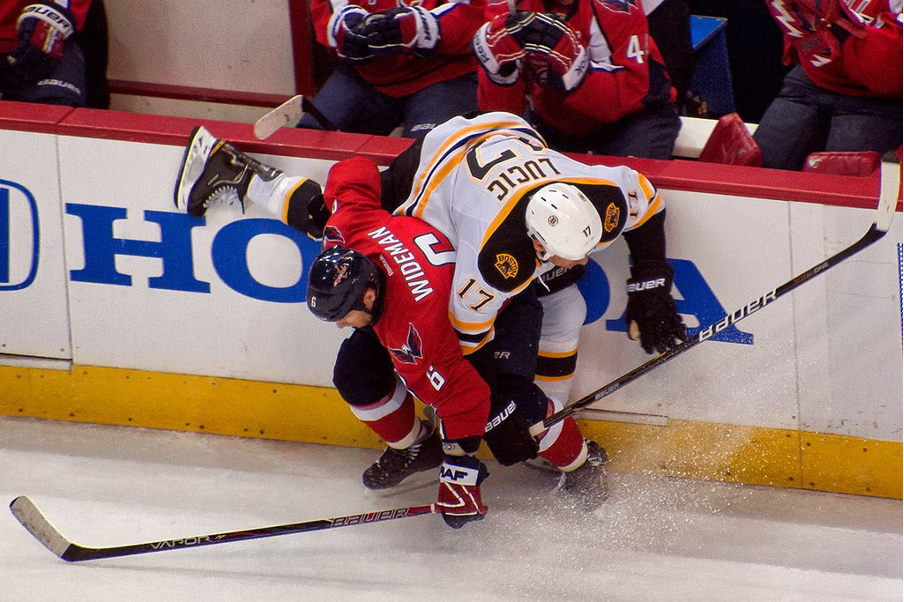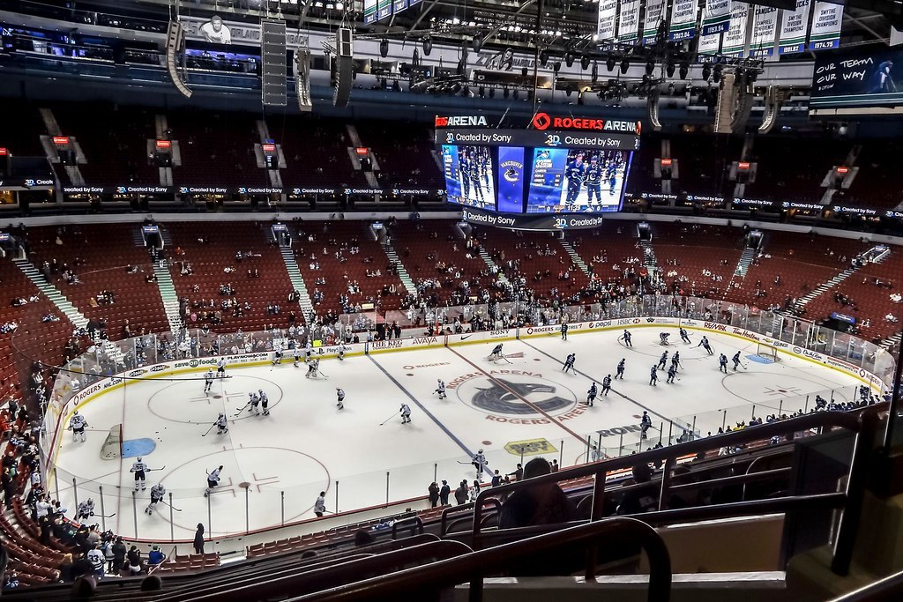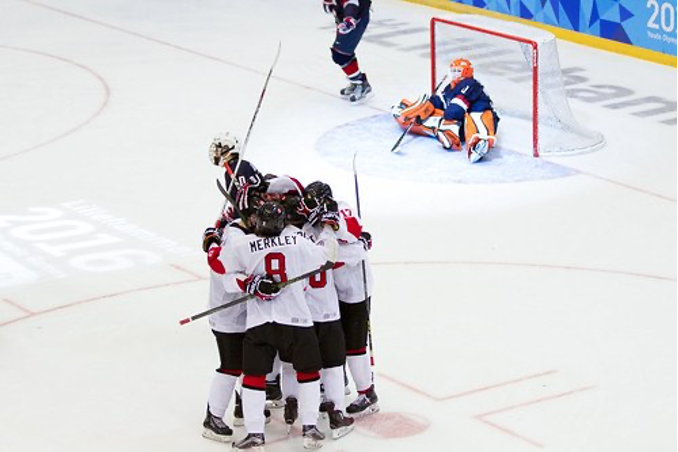Rules of Ice Hockey
The International Ice Hockey Federation (IIHF) is responsible for the rules of Ice Hockey. Rules are reviewed on an ongoing basis and there is normally a new addition published annually. These laws of the game are supplemented by operational rules imposed at National Governing Body level. In the UK, this is IHUK and England Ice Hockey.
IIHF Regulations
DownloadIIHF International Transfers
DownloadIIHF Disciplinary Code
DownloadIIHF Medical
DownloadIIHF Anti-Doping Code
DownloadIIHF Transgender Policy
DownloadIce hockey is a fast-paced team sport played on an ice rink. It is one of the most popular winter sports, particularly in North America, Europe, and other cold climate regions. The game is known for its high intensity, physicality, and skillful play.
Here’s a brief introduction to the key elements of ice hockey:
Objective:
The primary objective in ice hockey is to score more goals than the opposing team. Each team consists of skaters and a goaltender, and they compete to propel a puck into the opponent’s goal using a hockey stick.
Teams:
An ice hockey team typically has six players on the ice at any given time: three forwards, two defensemen, and one goaltender. Teams can make substitutions during stoppages in play.
Rink:
The game is played on a rectangular ice rink with goal nets at each end. The standard rink dimensions vary, but it is usually around 200 feet (61 meters) in length and 85 feet (25.9 meters) in width.
Duration:
A standard ice hockey game is divided into three periods, each lasting 20 minutes of playtime. If the score is tied at the end of regulation, the game may go into overtime or a shootout, depending on the league or competition rules.
Scoring:
A goal is scored when the entire puck crosses the goal line into the net. Each goal counts as one point. The team with the most goals at the end of the game is declared the winner.
Penalties:
Players can receive penalties for various infractions, such as tripping, slashing, or roughing. During a penalty, the penalized player must spend time in the penalty box, and the opposing team may have a power play with an extra player on the ice.
Face-offs:
The game restarts with a face-off at the centre ice spot or in one of the face-off circles after stoppages in play.
Body Checking
Body checking in ice hockey is a defensive technique aimed at disrupting an opponent with possession of the puck or separating the puck from the player entirely. Most types are not subject to penalty, and count as a legal check. A player can use a shoulder, hip or torso to hit or impede an opponent, but only when the opponent is in possession of the puck. If a player does not have possession of the puck, it is interference, and the player will receive a penalty. A body check that targets the head is illegal. A body check to an opponent’s back is illegal if the opponent is facing the boards.

Major Penalty
A player charged with a major penalty is sent off the ice for five minutes.
The most common major penalty is fighting. If both fighters receive five or ten-minute penalties, substitutions can be made.
At the referee’s discretion, an infraction commonly deemed a minor penalty can be increased to a major. This usually occurs if an opponent has been seriously injured, or if the referee believes there was a deliberate attempt to injure.
A player charged with a major penalty involving serious injury or attempt to injure is ejected from the game.
If a penalized player is ejected, a teammate is assigned to serve his major penalty. No substitution is allowed.

Minor Penalties
A player charged with a minor penalty is sent off the ice for two minutes, with no substitution allowed (power play).
Minor penalties are called for obstructing an opponent. Infractions include:
- Tripping (with the stick or knee)
- Holding (with stick or hands)
- Hooking (with stick)
- Interference (checking or impeding a player without the puck)
Penalties are called for dangerous use of the stick, including:
- Slashing
- Spearing
- High-sticking (hitting an opponent in the head or face)
- Cross-checking (hitting an opponent with the shaft of the stick)
Penalties are called for dangerous physical fouls, including:
- Elbowing
- Checking from behind
- Kneeing
- Roughing (broadly defined; usually involves a wrestling or shoving match)

Objectives
The objective is to score more goals than the opposing team.
A goal counts as one point on the scoreboard.
A goal can be scored by anyone on the ice, including the netminder.

Player Age Groups

Players
Each team has six players on the ice, five "skaters" and one netminder. The five "skaters" have assigned positions: three forwards and two defensemen. Netminder - Their job is to prevent the ice hockey puck from entering their net. Defence Players (left & right) - They are tasked with stopping the opposing forwards when their team does not have possession of the puck and providing offensive support when the team does have possession. Forward Centre - Responsible for taking faceoffs (the way play starts and restarts after a goal) to regain possession and covering the centre of the ice at both ends of the rink. Forward (left & right wing) - The wingers are responsible for play along the sides of the rink. They have some defensive responsibilities but are primarily relied upon as goal scorers. Player Substitutions Substitutions are unlimited and can be made at any time. A substitution does not require an official’s permission, or a stoppage in play. A player can join the game “on the fly” – during the flow of play – as long as the departing player is within five feet of the bench and not involved in the play or with an opponent.

Rink “Zones”
The rink is divided into zones by a red line at centre ice and two blue lines.
Defending Zone - The area where the goal net is located for the team defending that net.
Neutral Zone - The middle of the rink, between two blue lines.
Attacking / Offensive Zone - The area where the opposing net is located.

The Face Off
The game begins when the referee drops the puck between two opposing forwards. The faceoff is used to resume play following any stoppage in the game. There are nine designated faceoff spots painted on the ice.

The Game Clock
The game is played in three 20-minute periods. The clock is stopped during all stoppages in play, for example, if a penalty is called or a netminder makes a save.

The Puck Stick and Net
The Puck The puck is made of black, vulcanized rubber. A standard puck measures one inch thick and three inches in diameter, and weighs between 5.5 and 6 ounces. The puck can be moved with the hockey stick or the feet but picking it up with the hands is illegal. The Stick A stick is held by each player and used to retrieve, control, carry, pass and shoot the puck. Goals are scored by using the stick to shoot the puck into the opponent’s net. A shot that inadvertently deflects into the net off another player’s body is allowed to stand as a goal. The Net A cage measuring four feet tall and six feet wide, strung with nylon mesh in the back. There are two nets at opposite ends of the ice, guarded by the goaltenders.

What is a Penalty
A penalty in ice hockey is a punishment for an infringement of the rules. Most penalties are enforced by sending the offending player to a penalty box (sin bin) for a set number of minutes. During the penalty the player may not participate in play. Penalties are called and enforced by on-ice officials. The difference between a legal play and a penalty is open to interpretation by on-ice officials.
Power Play - A team has an advantage of having more players on the ice because the opposition team has taken a penalty and must remove a player from the game for a specified duration of time. A power play lasts for the duration of the penalty. In the case of minor penalties, the power play will end early if the team with the man advantage scores a goal.
Penalty Kill - The opposing team has a disadvantage of having less players on the ice. Player(s) must be removed to spend penalty minutes in the penalty box.
Penalties can be for stick fouls such as, high sticking, hooking and tripping, but they can be body fouls such as holding and roughing.
A minor penalty is two minutes in length. Major penalties and misconducts are for more serious offences and can be for five minutes, 10 minutes or a full match. The penalty ends immediately if a goal is scored by the opposing team.

England Ice Hockey Rules and Regulations
England Ice Hockey’s rules and regulations are reviewed on a regular basis and updated annually as a minimum. Please see the relevant sections below.
1-5 England Ice Hockey Regulations
Download6. NIHL Regulations
Download7. WNIHL Regulations
Download8. Junior Regulations
Download9. Coaching Regulations
Download10. Manager Regulations
Download11. Off-Ice Official Regulations
Download12. Code of Conduct and Ethics
Download13. Supporting Information
Download14. Department of Player Safety Procedures
Download15. Safeguarding Children Policy
Download16. Social Media Policy
Download17. Equality, Diversity & Inclusion Policy
Download18. Anti-Doping Policy
Download19. Anti-Corruption Regulations
DownloadCode of Conduct and Ethics
England Ice Hockey is responsible for setting the standards and values that apply at every level of ice hockey.
Ice hockey should be an inclusive, down-to-earth community where everyone feels welcome and can have fun. Through shared values and purpose, we believe we can uphold the highest levels of integrity and create a welcoming environment in which every person can be and feel involved.
The Code of Conduct and Ethics applies to all of our clubs, teams, players, coaches, managers, off-ice officials, parents, volunteers and staff.
Safeguarding
As ice hockey’s governing body in England and Wales, safeguarding is a fundamental aspect of England Ice Hockey’s role, and of its affiliated members.
Collectively, we have an ongoing duty to ensure the game is a safe, positive and enjoyable experience for the millions of children, young people and adults who regularly play, watch, coach, referee and volunteer.
England Ice Hockey will challenge conduct that does not comply with its safeguarding framework policies and procedures, and any behaviour that has or is likely to pose a risk of harm to children or young people in hockey.
The full framework of Safeguarding Regulations can be found here.
These Regulations set out a framework for England Hockey to investigate and decide upon such matters and the disciplinary actions that may be taken. For more information, please see the dedicated Safeguarding section of our website.
Discipline and complaints
England Ice Hockey is committed to ensuring a safe, welcoming and inclusive environment for all participants involved in the sport.
We have clear complaints and reporting procedures to ensure we are upholding the best possible standards across our sport, alongside an effective Department of Player Safety who administer and enforce the rules that govern the sport in England and Wales through robust disciplinary policies and procedures.
General Data Protection Regulations (GDPR)
The GDPR applies to you if you collect any personal data in running your club (which you definitely will do if you have any members). This includes searchable paper records. GDPR refers to data controllers (those who own and control the data) and data processors (anyone who processes data on behalf of a data controller).
Data must be:
- used fairly and lawfully
- used for limited, specifically stated purposes
- used in a way that is adequate, relevant and not excessive
- accurate and kept for no longer than is absolutely necessary
- handled according to people’s data protection rights
- kept safe and secure
- not transferred outside the European Economic Area without adequate protection
You will need your own Privacy Notice whereby you can give people information about how their personal data will be used. A template policy can be found in the resources below.
Think about how you gather information from individuals for club membership. It’s crucial not only to use this data for affiliate and sponsor communication but also to inform members about potential transfer of their information. This may include sharing data with umbrella organisations or within the club, especially if it’s not stored centrally. While you can still transfer data and send group emails, it’s essential to obtain proper consent. For instance, sharing league tables with club websites or officials’ data with leagues can streamline processes and prevent redundant data entry, but this should be done with the appropriate permissions in place.
Clear policies on data retention are required. You cannot keep data for longer than is necessary for the purpose for which it was collected. You also need to inform people how long you will keep their personal data; you cannot keep it indefinitely so need to decide on a reasonable timeframe for retention.
If you rely on consent from individuals to use their personal data in certain ways, for example to send marketing emails, the consent must be explicit, positively given for each separate use and can be removed at any time. It should be expressed in simple, easy to understand terms and avoid legal jargon.
There are additional protections for children’s personal data. If you collect children’s personal data then you need to make sure that your privacy policy is written in plain simple English and you may need to obtain consent from the child’s parent or guardian.
You need to make sure that personal data is held securely, i.e. that electronic documents are encrypted and password protected and that they are backed up on a regular basis. Consider restricting the storage of personal information to GDPR compliant secure systems and not keeping personal details on spreadsheets etc. You also need to make sure that your volunteers can identify when a breach has happened and that they know what they should do and who they should talk to. Pay particular attention to any sensitive information such as health records. You are expected to keep this sort of sensitive data particularly safe.
You have 72 hours from being aware of a breach to report it to the ICO. This includes the loss of any personal data.